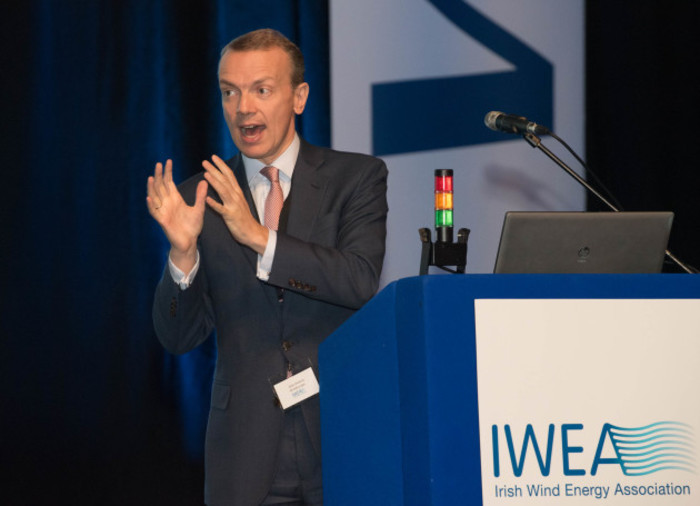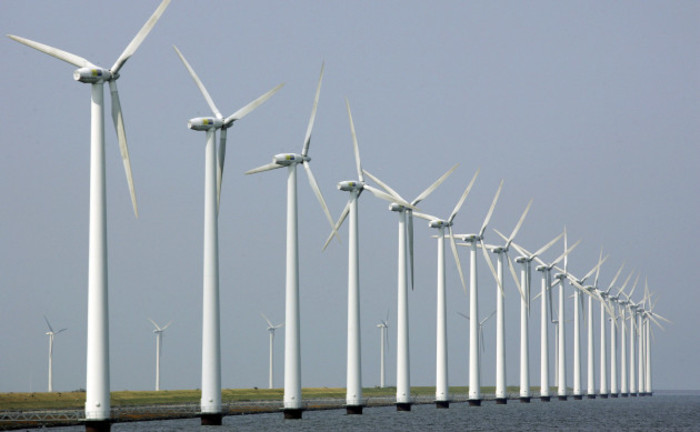Ireland risks being knocked off its perch as a European leader in wind energy
The head of WindEurope said conditions are not ideal in Ireland for investment in the sector.
IRELAND’S WIND ENERGY industry risks stagnating unless the government clearly sets out its ideas for the sector.
That’s according Giles Dickson, the head of WindEurope, a body that represents over 500 members active in the European wind energy industry, which is worth €72 billion annually.
Europe was established as the leading market for the global wind industry, but since 2013, countries with strong wind markets such as Ireland, Italy, Portugal, Romania, Spain and the UK have seen a slowdown in installations of wind farms.
Dickson told Fora the Irish wind industry risks further decline if action is not taken by the government to address the uncertainty around taxes policies that affect Irish wind farms.
“The government produced a very good energy white paper last year, but nothing has happened since that. I know there has been an election, but the new government has to deliver what was set out in the white paper,” he said.
“We need clarity on policy, what the taxes are going to be on wind farms and what the planning guidelines are going to be.”
 Giles Dickson
Giles Dickson
He added that the lack of clarity around the volumes of wind energy the Irish government is aspiring for and the regulatory framework that will be underpinning these farms will also hamper investment in Irish wind companies.
“What will be the financial regime around new wind farms? Will they be bidding into auctions as they are in other European countries as they are now?
“As long as there is uncertainty about the commercial rates and planning guidelines, then investors will be more reluctant to invest in the Irish market for wind energy.”
Investment
Compared to other European countries, the amount of energy supplied to the Irish grid by wind energy is quite high. Only Denmark is ahead of Ireland when it comes to wind energy penetration.
According to Dickson, who was in Killarney for the Irish Wind Energy Association’s autumn conference yesterday, Ireland’s wind industry risks stagnating due to poor investment conditions.
“The cost of capital reflects the way investors are spooked by different wind markets. If you invested in new wind in Ireland, you would be paying 9% interest on what you borrow to finance your investment,” he said.
“If you did it in Germany, it is 4% interest. In France, it’s 6% and in the UK it’s 6.5%. Now the lenders are demanding a higher return for investments in Ireland because of this uncertainty over the regulatory framework.”
Dickson said it will be very hard for Ireland to be competitive if this 9% interest figure remains in place and the country risks going backwards like other European countries.
“What has happened in Europe is that there are a number of countries like Romania, Poland and Spain that have changed their policies on renewables and gone backwards in terms of the level of support they are offering,” he said.
“Spain even imposed retrospective changes on the revenue they previously guaranteed to wind farms.”
“This has spooked investors and they are very sensitive to changes in regulation and because of the regulatory uncertainty in Ireland today, investors are demanding a higher cost of capital.”
Despite the forewarning that Ireland isn’t maximising its wind energy investment potential, an Irish Wind Energy Association survey published today forecast that the industry will create over one thousand new jobs and take in investment of over €2.5 billion by 2020.

Not ambitious
On a European-wide basis, Dickson said that Europe is also losing its competitiveness in the global wind energy industry and this is partly due to unambitious targets for renewable energy usage.
The EU has targeted for at least 27% of final energy consumption to come from renewables by 2030, an aim which is quite low relative to the levels being aspired for in other developed and developing economies.
“If the level of ambition is not there, Europe could fall behind very quickly. Certainly that is what we saw with the solar PV industry. Europe was the leader and it lost that to China very quickly,” Dickson said.
“The size of the European market each year is decreasing at the moment, while the Chinese market last year was well over twice as large as the European market.”
He added that Europe is currently competing successfully with the Chinese to develop wind turbine for non-European developments, but the sheer size of the Chinese market means Europe is about to fall behind.
“The Chinese have a domestic market is twice the size, they will be reducing their costs faster than we are able to reduce ours because they have bigger scale and are able to move more rapidly in the development and optimisation of new technologies.
“But we can avoid this happening if we maintain healthy volumes in the European market and continue to expand our installed base of wind turbines.”





